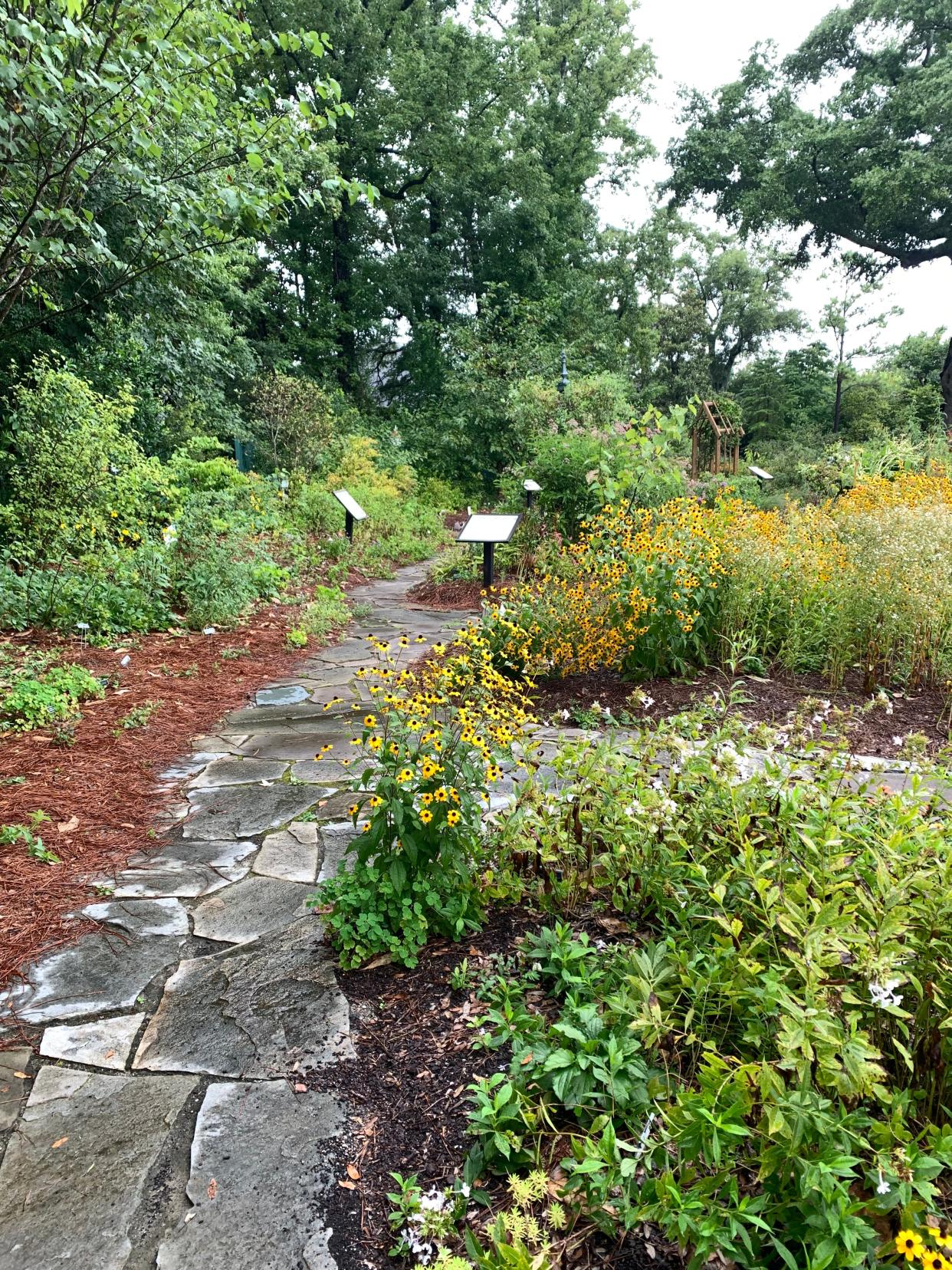Why nurturing NC's native plants might be your yard's answer to climate change

After a nearly nine-month-long spell of dry weather that had thrown much of Eastern North Carolina into drought, early summer rains helped the region replenish its water supplies. Yet through Monday Wilmington was running more than 15 inches below normal annual rainfall for the year, with less than 0.6 inches recorded in October. That's prompted the U.S. Drought Monitor to declare the region "abnormally dry," with most of Duplin County already back in drought.
It's not just the lack of rainfall that's impacting the region. In June, the National Weather Service office in Wilmington reported that the Port City has set 18 new record temperature highs since 2020 versus five new record lows.
As the weather continues to throw the region meteorological curve balls, which many scientists blame on climate change, a small but increasing number of homeowners are wondering if there's a better way to landscape their yards than with traditional turf and shrubs that might not be as resilient for the drier and hotter climate that's projected for North Carolina's future.
Yes, experts say. But it takes some planning and engagement on the homeowner's side.
"It's putting the right plants in the right places," said Matt Collogan, an agent with the New Hanover County Cooperative Extension. "And it's about using water in a smart way."
Andy Wood, who owns Habitats Gardens in Hampstead, which takes a nature-based approach to landscaping, agrees.
"It can be a little complicated, and you have to use a water-thrifty philosophy as a guiding principle," he said. "But if you're willing to put the time in and realize it's going to take some work, it's definitely worth it."
Green concerns: How important is climate change to NC voters in the 2022 midterm elections?
Read this: From Outer Banks to Wilmington, 1.8M residents mired in dry, drought conditions
For an area blessed with seemingly abundant water supplies, being careful with water might not come across as a major concern to many residents. But Wood and Collogan said looks can be deceiving.
While New Hanover County is surrounded by water on three sides, most of that is salty or brackish. And the region's sandy soils don't hold moisture well. When the rains don't come as frequently as they have in the past, as has happened for most of the past year, that leaves homeowners facing a tough decision.
Turning on sprinkler systems can help keep lawns and gardens alive, but it can get expensive. A private well is a cheaper option, at least after it's installed. But either way uses local water supplies which many fear are going to become more stressed in the future as the Cape Fear region's population continues to grow and development expands ever outward from Wilmington and coastal areas.
“When you get down to it it's a social consciousness question of how we’re using our natural resources that our kids and grandkids are going to rely on," Wood said.
While North Carolina is no stranger to drought, those earlier dry periods were weathered by a state that didn't have as many people, homes and businesses drawing on its water resources.
According to the N.C. State Climate Office, the Tar Heel State has had eight periods in which drought has persisted for at least 23 weeks this century, including the 2021-22 drought that ended earlier this year. Three of those seven droughts lasted a year or more, including the 1999-2002 and 2007-2009 droughts.
North Carolina's population in 2000 was just over 8 million. It is estimated to be 10.7 million today, according to the latest U.S. Census figure. Projections estimate the state will be home to nearly 14 million people by 2050.
Go native
Both Collogan and Wood said one easy way to reduce a yard's water needs is to go native when picking the shrubs, trees and even turf − if you decide to have grass.
"We have 1,500 different kinds of native plant in Southeastern North Carolina, so there's no shortage to choose from," Wood said.
Not only will they likely require less water, at least after they're established, they will also better reflect the local environment and provide habitat for native fauna.
“We’re turning into Generica," Wood said, alluding to the propensity of developers and homeowners to often use the same types of trees and shrubs no matter where they are in the country. "It’s like Anyplace USA."
Recognizing the ecological value of going local, Gov. Roy Cooper declared last week as "Native Plants Week" in North Carolina. The proclamation noted that "gardens and landscapes composed of North Carolina's native plants require less water and little or no fertilizers, soil amendments or pesticides."
Climate crisis: How much money is your state spending to defend against climate change? What we learned
Collogan said that while native vegetation is designed to better handle the local conditions, climate change is likely to increase pressure on them with warmer temperatures and longer dry spells.
That could make plants that are native to South Carolina or Georgia's coastal plain a good option for local landscaping.
"North Carolina is the new North Florida or Georgia, September is the new August, and we need to get used to that," Wood said.
The New Hanover County Arboretum has a native plant garden that is open to the public. For more information on the garden or native plants in general, go to https://arboretum.nhcgov.com or call 910-798-7660.
Reporter Gareth McGrath can be reached at GMcGrath@Gannett.com or @GarethMcGrathSN on Twitter. This story was produced with financial support from 1Earth Fund and the Prentice Foundation. The USA TODAY Network maintains full editorial control of the work.
This article originally appeared on Wilmington StarNews: Why going native could help NC backyards deal with climate change

